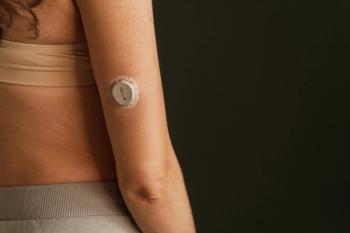
Study: Reduction in Essential Outings was More Pronounced in Dense Regions During COVID-19 Pandemic
Study shows large reductions in visits to essential stores during the pandemic, such as pharmacies, but found essentially no reduction in non-essential visits to parks and other outdoor spots.
New research has found that stay-at-home orders during the coronavirus disease 2019 (COVID-19) pandemic lessened outings to grocery stores, pharmacies, and transit stations, but did not reduce visits to parks and beaches. The study, published in Landscape and Urban Planning, also found differing levels of compliance based on population density.
The study authors examined publicly available Google data from millions of smartphone users in the United States. Their destinations included grocery stores, rail stations, and parks in all 771 metropolitan counties in Google’s dataset. The study period extended from the first day of the stay-at-home order in each county until May 11, 2020.
The researchers found relatively large reductions in visits to essential stores, such as grocery stores and pharmacies, but they found essentially no reduction in non-essential visits to parks and other outdoor spots, such as parks and beaches. According to a press release, mandatory social distancing and lockdown measures have been the most widely used public health tools against COVID-19, but the degree to which people comply has been unclear and relatively unstudied thus far, according to the researchers.
Significantly, the authors found that compliance was more pronounced in more densely populated areas. Senior author Shima Hamidi, PhD, said this may be because residents of dense areas are more aware of the dangers.
“The main challenge of compliance with stay-at-home orders in dense and compact areas doesn’t seem to relate to ‘essential’ trips to grocery stores, pharmacies, and transit stations—trips that people in these areas seemed quite willing to reduce,” Hamidi said in a press release. “This could be due to access to better services such as home-delivery grocery shopping in dense areas. Also, recent evidence shows that residents of dense places are more likely to adhere to the stay-at-home order, being more cognizant of the threat.”
For all 771 counties analyzed, lockdowns appeared to have a significant impact on the 3 major categories of travel that the investigators examined. Trips to grocery stores and pharmacies remained, on average, 13.3% below the local baseline from the implementation of the lockdown until May 11. Similarly, trips to transit stations stayed 37.4% below baseline. However, trips to parks, beaches, and other outdoor recreational areas were just 0.4% lower on average.
According to Hamidi, the lack of change in park and beach visits may be because these trips were still allowable under many stay-at-home mandates and may have played an important role in reducing stress during the pandemic. The press release added that many people viewed outdoor activities as relatively low risk, although Hamidi noted that there is some evidence suggesting that these spaces can present a significant chance of virus transmission.
“This is not surprising but could be concerning, since visiting parks during the pandemic has its own risks,” Hamidi said. “Parks could be a potential hotspot for the transmission of the virus, especially if people don’t physically distance.”
Finally, the authors also analyzed trip changes during lockdown periods and counties’ electoral results and found slightly lower compliance overall in metropolitan counties where President Donald Trump won a higher percentage of the vote in the 2016 presidential election.
The researchers observed that in all areas, reductions in the 3 types of trips tended to be most notable in the days just following the stay-at-home order announcement but lessened as the lockdowns continued.
“We urge decision-makers, planners, and public health officials to design and implement social distancing guidelines specifically for parks and similar areas, and to closely monitor people’s social distancing behaviors in and travel patterns to parks in relatively dense urban spaces with higher per capita COVID-19 mortality rates,” Hamidi concluded.
REFERENCE
Americans’ Responses to COVID-19 Stay-At-Home Orders Differed According to Population Density [news release]. Johns Hopkins Bloomberg School of Public Health; October 21, 2020.
Newsletter
Stay informed on drug updates, treatment guidelines, and pharmacy practice trends—subscribe to Pharmacy Times for weekly clinical insights.

















































































































































































































